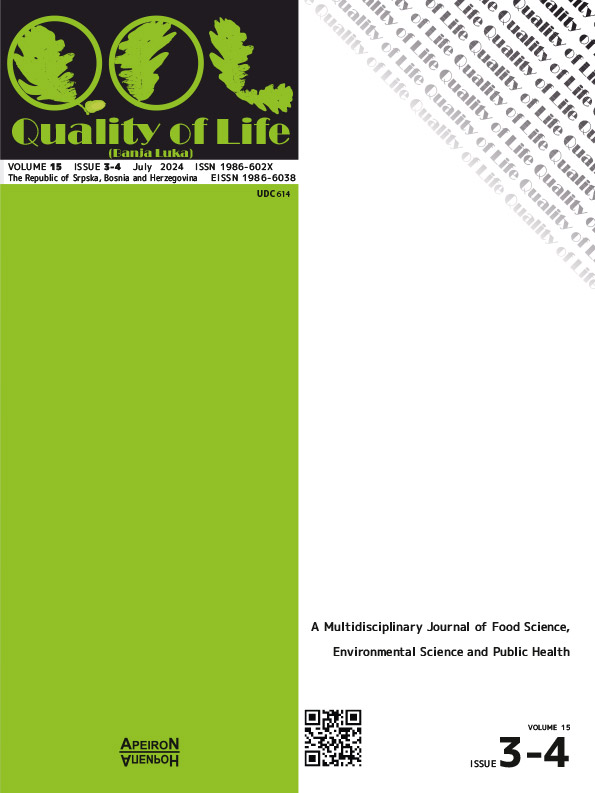Environmental Assessment of Particulate Matter Pollution Generated by the Exploitation of Heliopolis Aggregates Quarry
DOI:
https://doi.org/10.7251/QOL2403083DKeywords:
airborne pollution, mining operations, plant stress, soil and water pollution, Guelma, AlgeriaAbstract
In recent decades, extractive industries such as mining and quarrying have contributed to increasing environmental deterioration, particularly airborne emissions. Therefore, we aim to evaluate the environmental impacts of particulate matter (PM1, PM2.5, and PM10) emitted during the exploitation operations of aggregates in the Heliopolis quarry in Guelma, Algeria. For this purpose, dust samples were analyzed using XRD and XRF spectroscopy techniques. While preparing the gravel, we monitored air quality using a specialized device and analyzed flora samples from near the Heliopolis aggregates quarry. Furthermore, we conducted chemical and physical analyses of surface water samples and soil from a nearby farm. The obtained results show that the concentrations of PM (particulate matter) exceeded the WHO limit values for PM10 (50 µg/m3) and PM2.5 (25 µg/m3) within 24 hours. This was particularly noticeable in sampling stations S1 and S2, where the PM2.5 concentration was at 520 µg/m3 and PM10 at 684 µg/m3, and 516 µg/m3 and PM10 at 676 µg/m3, respectively. According to the XRD and XRF analyses, the quarry dust contains various minerals, including oxides and heavy metals. An analysis of the plants surrounding the Heliopolis quarry confirms the presence of dust containing the same mineral elements emitted from the quarry on the leaves and branches of trees, which hinders their natural growth and blocks sunlight.
